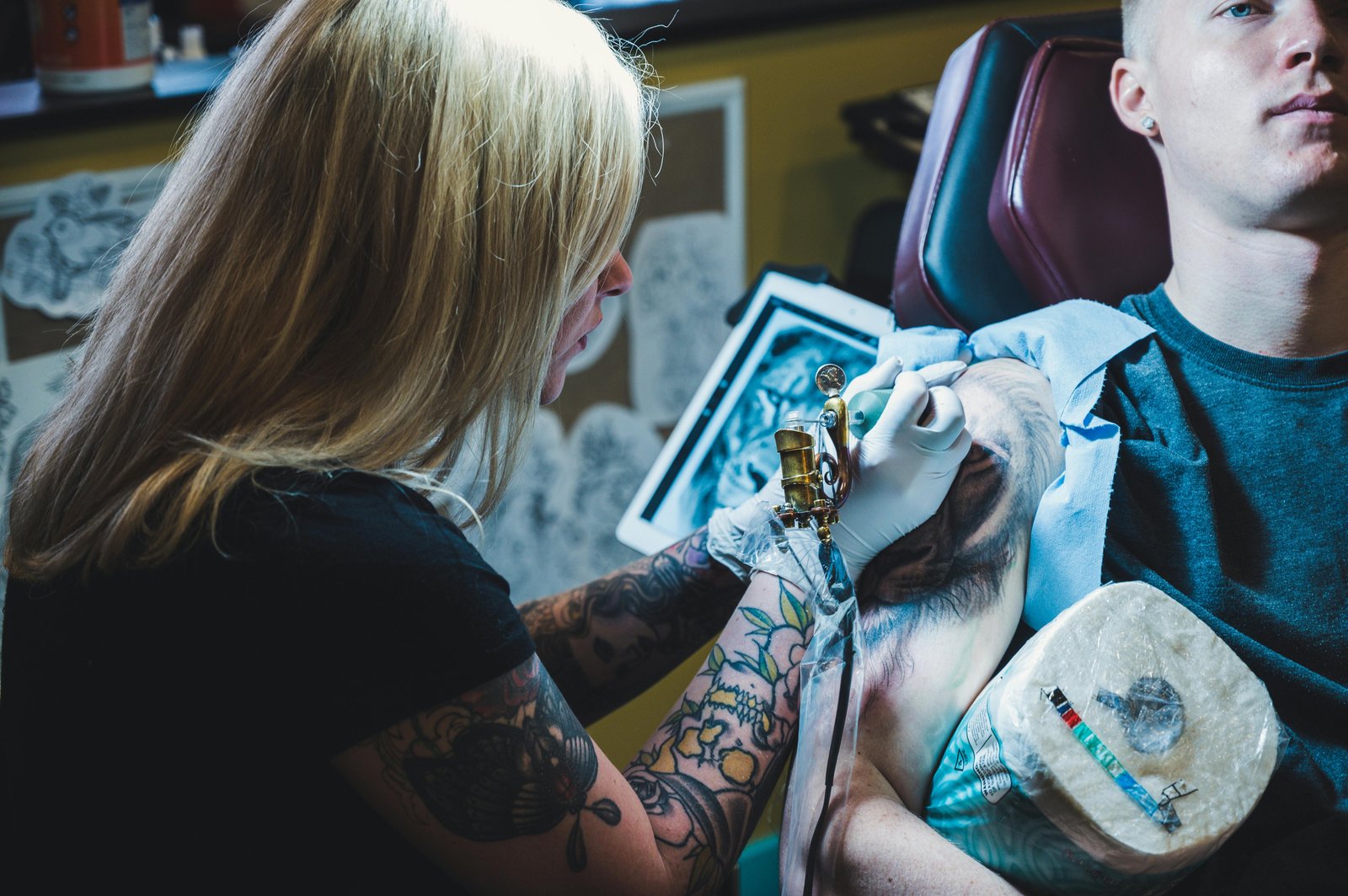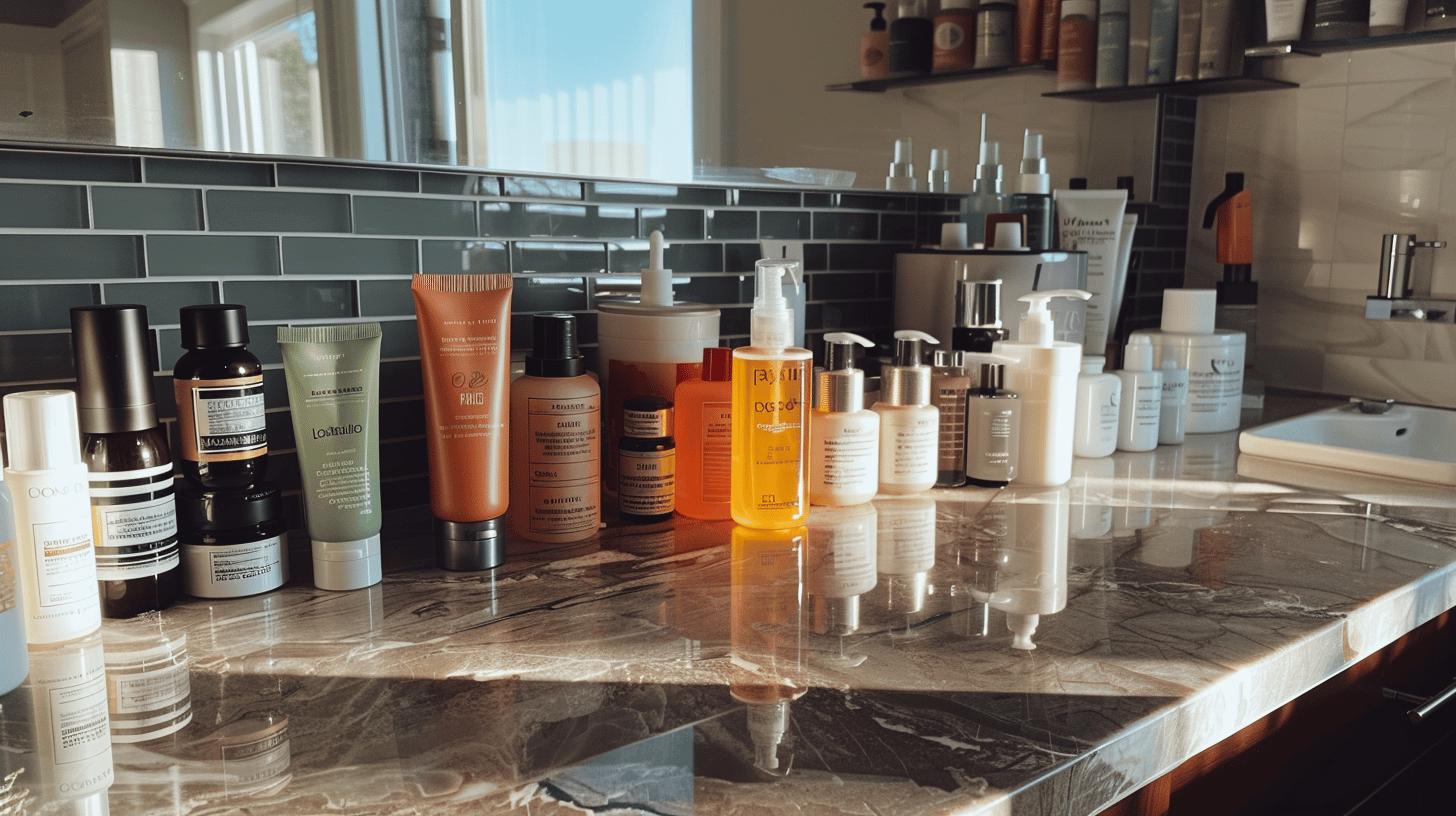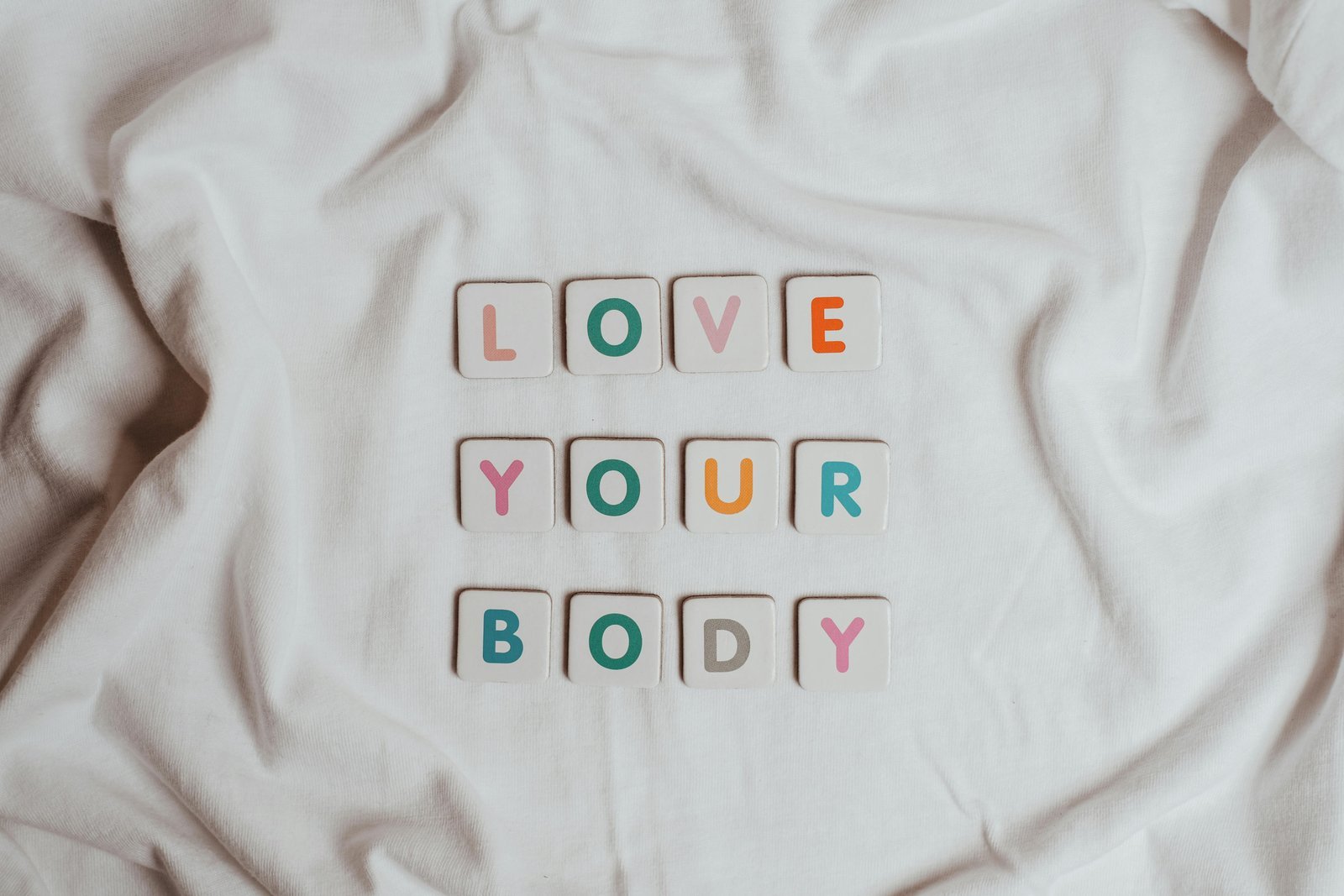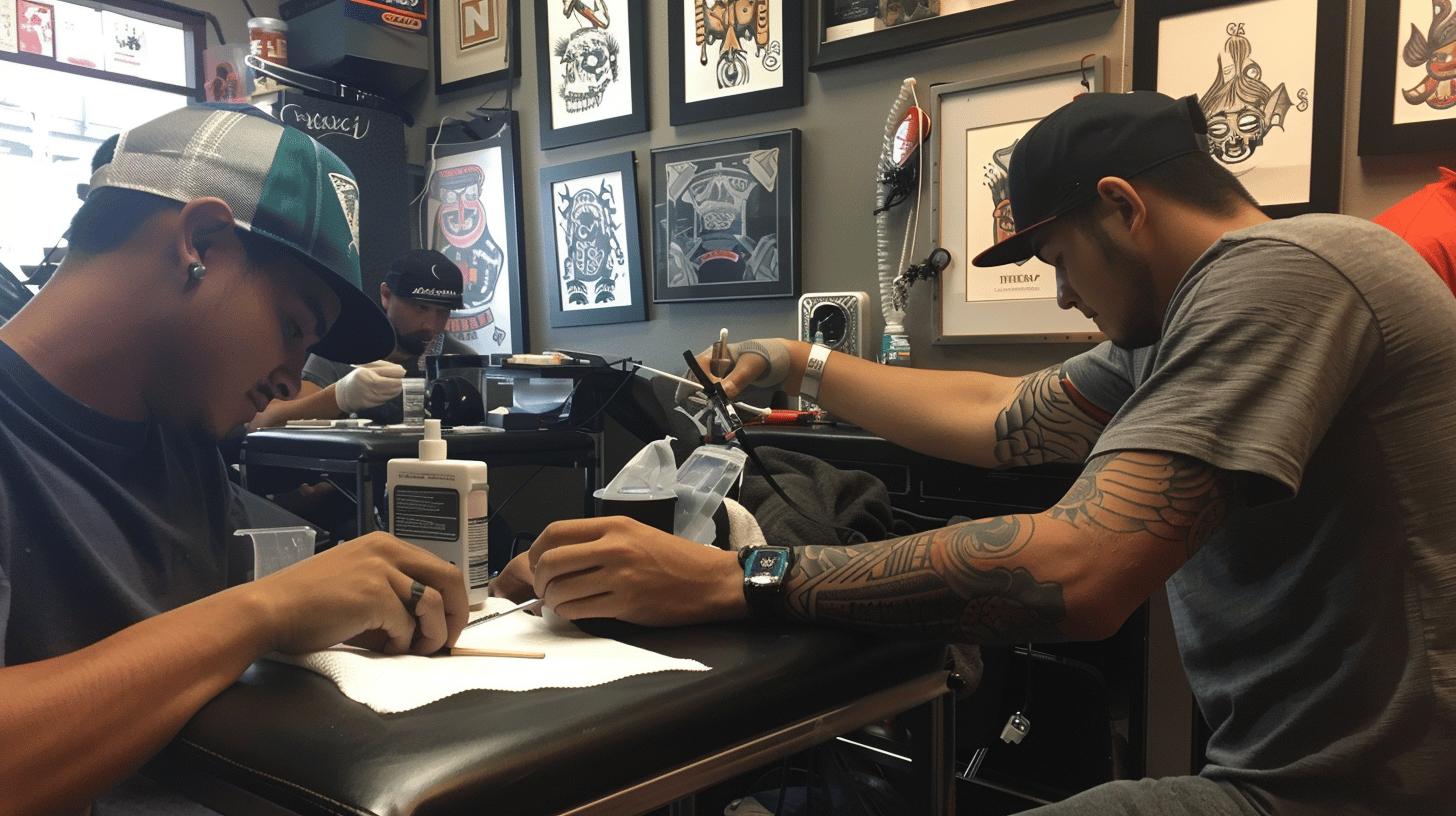Does Numbing Cream for Tattoos Really Work? Honest Results and Expert Insights
Getting a tattoo is often described as a rite of passage — but does it really have to hurt? Plenty of people swear by using tattoo numbing cream to make the whole tattoo experience less painful, while others reckon it’s a waste of time. So, does numbing cream work for tattoos, or does skin numbing cream work for tattoos only in theory? Whether you’re booking your first tattoo appointment or planning a lengthy tattoo session, understanding the truth about tattoo numbing can save you a lot of grief. Let’s look at honest results, straight from tattoo artists, dermatologists, and real clients who tried TKTX and other creams.
Does Numbing Cream Work for Tattoos? A Straight Answer
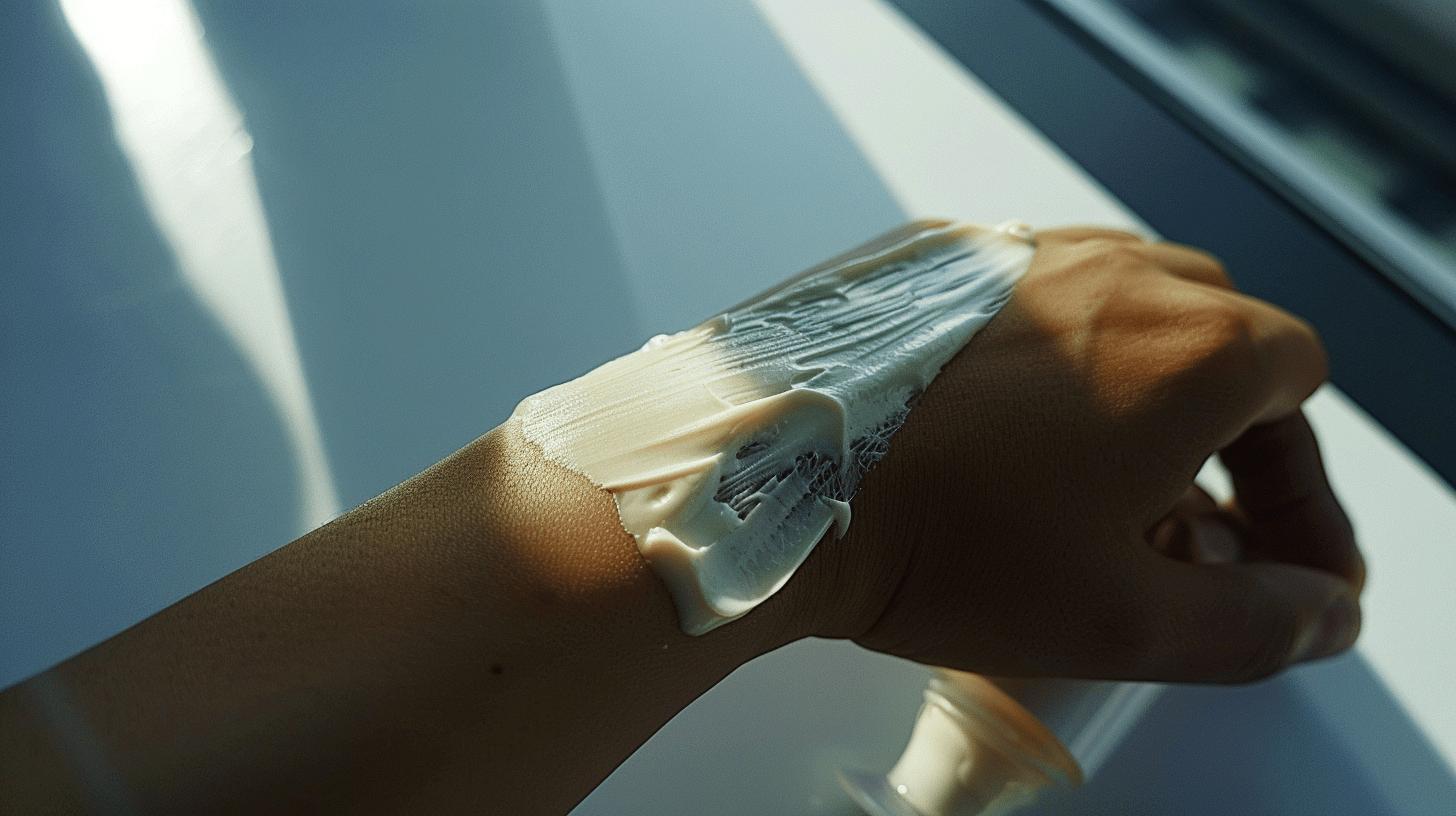
Does numbing cream work for tattoos?
Yes, tattoo numbing cream can work to reduce the pain of getting a tattoo. Tattoo numbing creams are topical anaesthetics applied directly to the skin, designed to dull or block pain signals before and during the tattooing process.
Tattoo numbing cream uses ingredients like lidocaine, benzocaine, or prilocaine to numb the skin by affecting nerve endings. When you apply the cream properly — usually 30-60 mins before your tattoo appointment — it creates a numbing effect that makes the tattooing process feel less painful.
People often ask, does skin numbing cream work for tattoos on all parts of the body?
It works better on fleshier areas like the upper arm, thigh, or inner bicep. Areas over bone, like ribs, hands, or feet, can be more difficult to numb fully because the skin is thinner and the nerves are closer to the surface.
Does tattoo pain cream work throughout a long tattoo session?
Not always. The numbing effect usually lasts between 1 to 3 hours depending on the product strength, how thickly you apply the cream, and how well it absorbs into the skin. In a longer tattoo session, the effect may start to wear off, and you might feel the pain more towards the end.
Here’s what the tattoo community often reports about using tattoo numbing cream:
- Benefits:
- Makes the first tattoo or sensitive areas more bearable.
- Helps reduce anxiety during the tattooing process.
- Allows for longer tattoo appointments without frequent breaks.
- Limitations:
- Numbing creams work best when applied properly and left enough time to activate.
- Once the cream is removed and the numbing starts to fade, the pain can return.
- Some tattoo artists feel that numbing the skin can make it slightly more difficult to tattoo because the skin can become softer.
Tattooists recommend trusted products like Emla, TKTX, and Dr. Numb for effective numbing. Always ask your tattoo artist before you use numbing cream to make sure it won’t interfere with your new ink or the healing process.
How Tattoo Numbing Creams Work and What to Expect
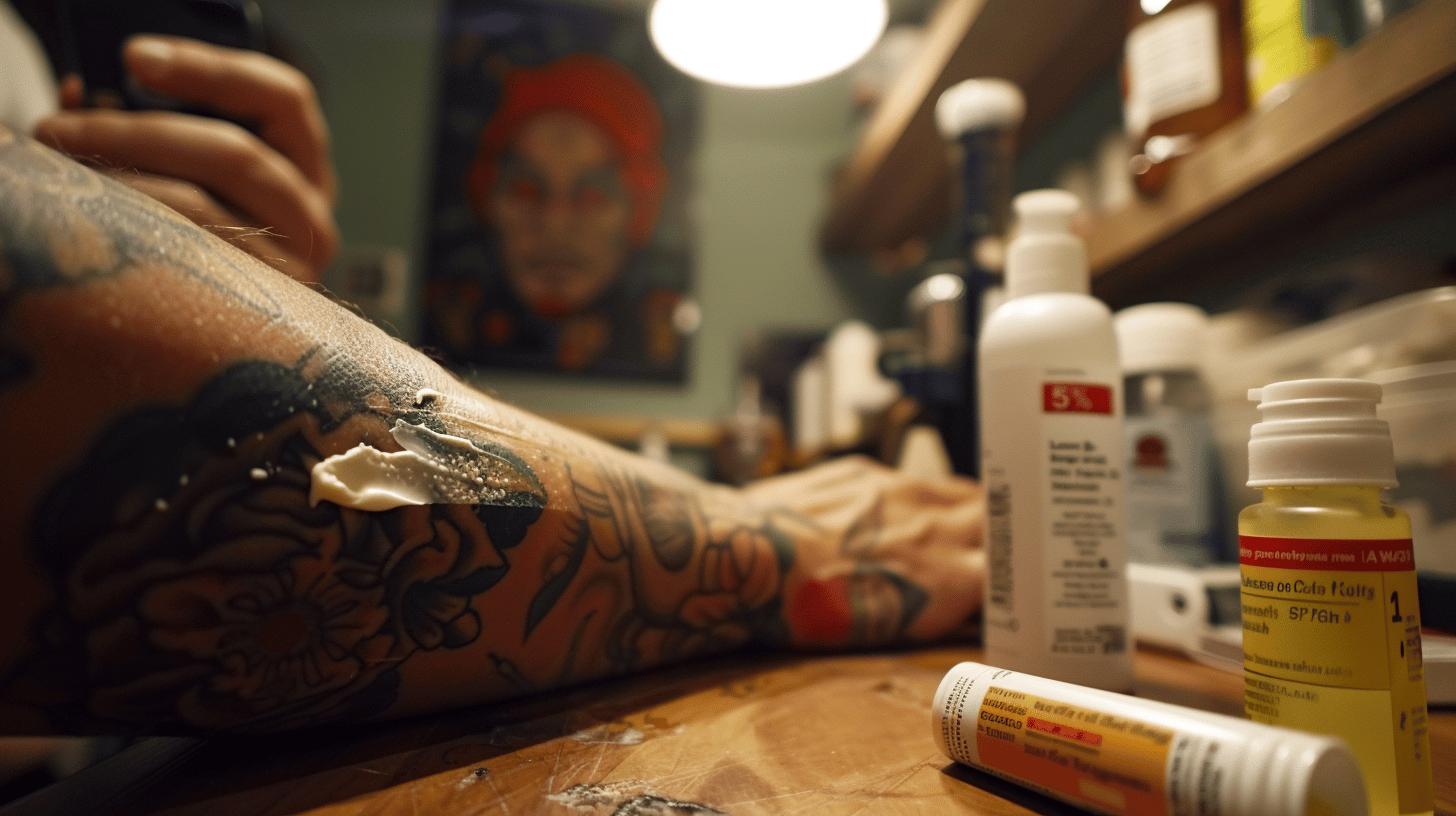
How numbing cream works?
Numbing cream works by blocking the pain signals sent from the skin’s nerves to the brain. Tattoo numbing creams are topical anaesthetics applied directly to the skin before the tattooing process begins. These creams use active ingredients like lidocaine, benzocaine, or epinephrine to numb the skin or constrict blood vessels, making the tattoo experience less painful.
Tattoo numbing creams fall into three main types:
- Nerve blockers: These stop pain signals from reaching the brain but may still let you feel pressure.
- Nerve deadeners: These temporarily deaden the nerves to block both pain and pressure sensations.
- Vasoconstrictors: These restrict blood vessels, reduce bleeding, and help the numbing effect last longer.
How effective is numbing cream?
The effectiveness depends heavily on how you apply the cream, the strength of the numbing agent, and how your body responds. Most tattoo numbing creams, like emla cream or tktx, provide a strong numbing effect for 1 to 3 hours. A thick layer needs to be applied about 30-60 mins before getting a tattoo and covered with a wrap to properly absorb into the skin.
If the cream starts to wear off during a longer tattoo session, the pain can return. This is why many artists suggest using tattoo numbing cream mainly for small or medium tattoos, or particularly sensitive areas of your body.
How safe is tattoo numbing cream?
Generally, tattoo numbing creams are safe when applied correctly. They are widely used for tattoos, laser tattoo removal, and other needle and laser procedures. Still, there are potential side effects like redness, swelling, or allergic reactions. Rare cases like methemoglobinemia (a blood disorder) have been linked to overuse of benzocaine-based products.
To minimise risks:
- Always follow the product instructions carefully.
- Do not exceed the recommended amount.
- Speak to a dermatologist or your tattoo artist if unsure.
Here’s a quick summary of what to expect when using tattoo numbing cream:Aspect What to Expect Sensation Reduced pain, but some pressure feeling may remain Duration 1 to 3 hours depending on product and application Application Thick layer 30-60 mins before tattoo, covered with plastic Potential Side Effects Redness, swelling, allergic reaction, rare blood issues If you plan on using tattoo numbing cream for your next tattoo, make sure to leave yourself enough time to apply the cream properly before your tattoo appointment. Always ask your artist if they are comfortable tattooing over numbed skin, as some feel it can make the skin more difficult to tattoo.
Best Tattoo Numbing Creams: Top Recommendations in the UK
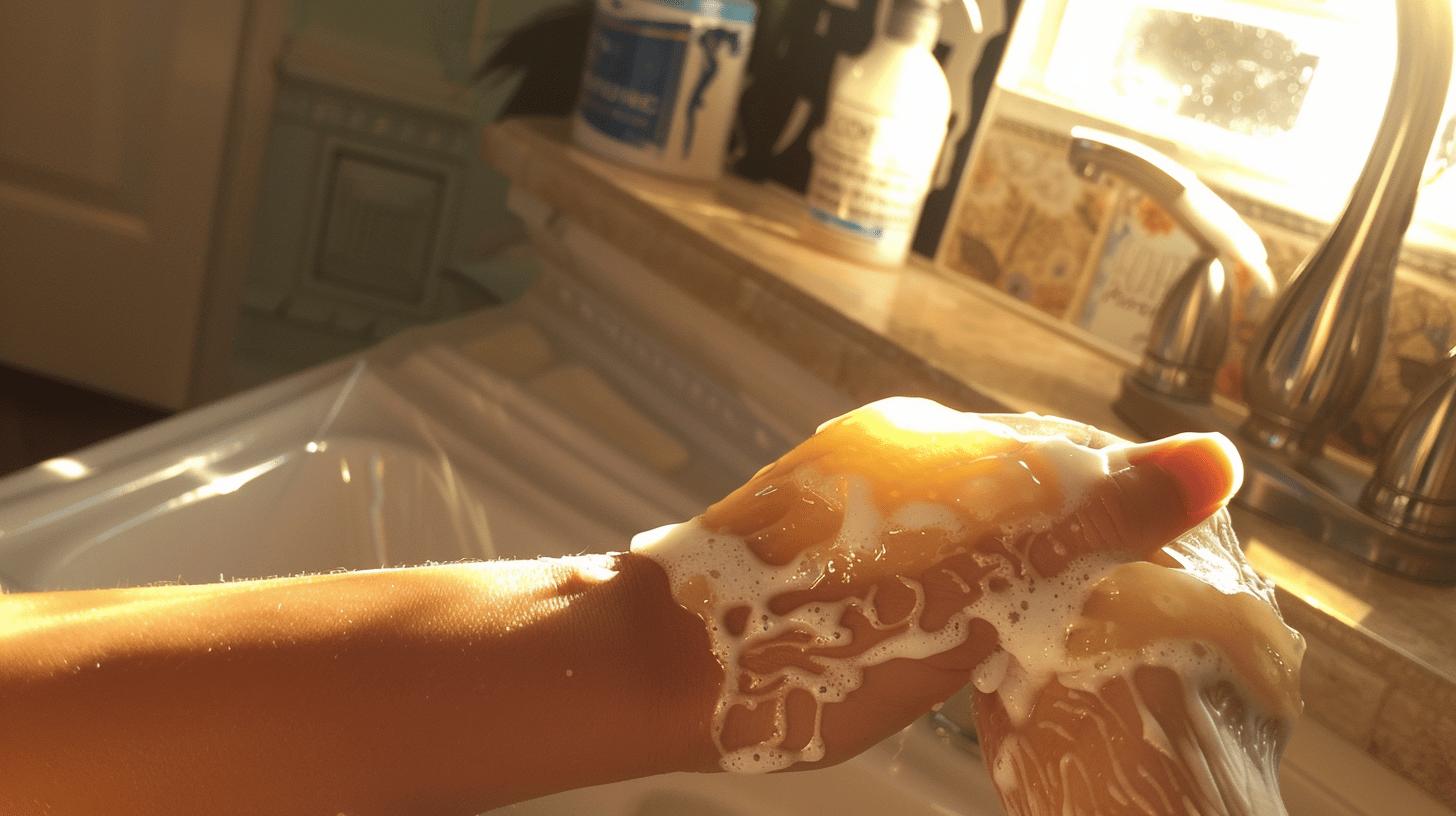
What are the best numbing creams for tattoos in the UK?
TKTX, Dr. Numb, Emla, and Hush are among the top recommendations. These creams are applied directly to the skin before a tattoo appointment to reduce pain by numbing the area.
How do these tattoo numbing creams work for tattoos?
They use active ingredients like lidocaine or benzocaine to dull pain signals from the dermis to the brain. The strongest tattoo numbing cream in UK markets contains up to 5% lidocaine, the legal maximum without a prescription from your local pharmacy.
Here’s a quick guide to the best tattoo numbing cream UK options:
| Product | Strength | Common Use | Notable Features |
|---|---|---|---|
| TKTX | Up to 5% lidocaine | Medium to large tattoos | Available in multiple colours and strengths |
| Dr. Numb | 5% lidocaine | Longer tattoo sessions, laser tattoo removal | Strong, consistent numbing effect |
| Emla | 2.5% lidocaine, 2.5% prilocaine | First tattoo, small to medium areas | Medical-grade reliability, easily available to buy |
| Hush | 4% lidocaine | Shorter sessions, touch-ups | Cooling aloe vera formula to soothe the skin |
**Which is the strongest tattoo numbing cream UK clients trust?**
Dr. Numb is one of the strongest, containing the maximum 5% lidocaine allowed over-the-counter. It delivers an effective numbing for up to 3 hours if you apply a thick layer and leave yourself enough time for it to absorb into the skin before your tattoo session.
**Why do tattoo artists recommend these creams?**
Using tattoo numbing cream properly can make a painful experience more bearable, especially for a first tattoo or sensitive areas of your body. Still, some tattooist’s experiences show that numbing cream may cause the skin to become softer, which can make it slightly more difficult to tattoo during longer sessions. Always ask your artist before using tattoo numbing cream to avoid interfering with your new ink or the healing process.
How to Apply Tattoo Numbing Cream Properly for Best Results
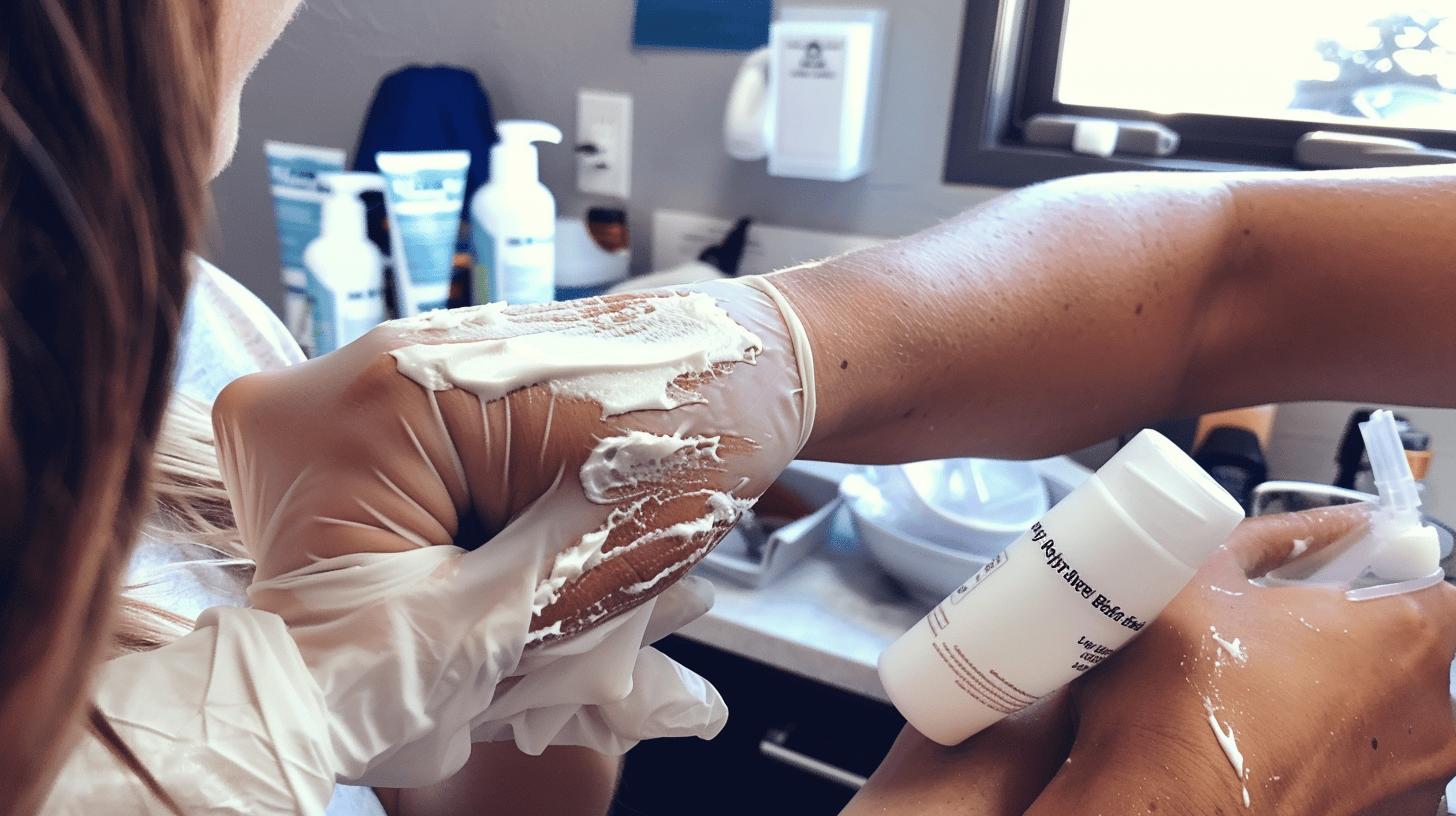
How long to apply numbing cream before tattoo?
Apply the cream 45 to 60 minutes before the tattoo session for the best numbing effect.
Timing is everything when using tattoo numbing cream. If you don’t leave yourself enough time to apply the cream properly, it can fail to activate fully, leaving the tattoo experience more painful than necessary. Plan ahead and follow each step carefully to get the most effective numbing.
Here’s a step-by-step guide on how to use numbing cream correctly:
- Clean the skin
Wash the area where the tattoo will be placed with soap and water. Pat it dry completely. Removing oils and dirt helps the numbing agent absorb into the skin more effectively. - Wear gloves
Always wear disposable gloves when applying tattoo numbing cream. This prevents the topical lidocaine or benzocaine from numbing your fingers instead of the tattoo area. - Apply a thick layer
Use numbing cream for tattoos generously. Apply a thick layer without rubbing it in. You want enough product to cover the entire area to numb the skin properly. - Cover with wrap
After you apply the cream, cover it with plastic wrap. This keeps the topical numbing cream warm and promotes better absorption into the dermis. Keeping the area sealed helps the cream activate the pain-blocking ingredients to achieve a stronger numbing effect. - Remove before tattooing
Just before the tattoo artist starts, the wrap should be removed, and the excess cream wiped off. Leaving the cream on too long or tattooing over it without cleaning can hinder the tattooing process or the healing time.
Here’s a quick breakdown:Step Action Purpose 1 Clean the skin Prepares area for better absorption 2 Wear gloves Prevents numbing your fingers 3 Apply a thick layer Maximises numbing effect 4 Cover with wrap Enhances absorption and activation 5 Remove and clean area Prepares skin for tattooing When you use numbing cream properly, it can make getting a tattoo much more bearable, especially if you are getting a first tattoo or working on a sensitive area of your body. Products like tktx, emla, or other topical anesthetic creams provide real benefits to using numbing creams work effectively if applied correctly. Always ask your artist if they are comfortable with you using tattoo numbing cream during your tattoo appointment, as the skin can sometimes become difficult to tattoo after numbing.
Tattoo Pain Relief Without Numbing Cream: Alternatives You Can Try
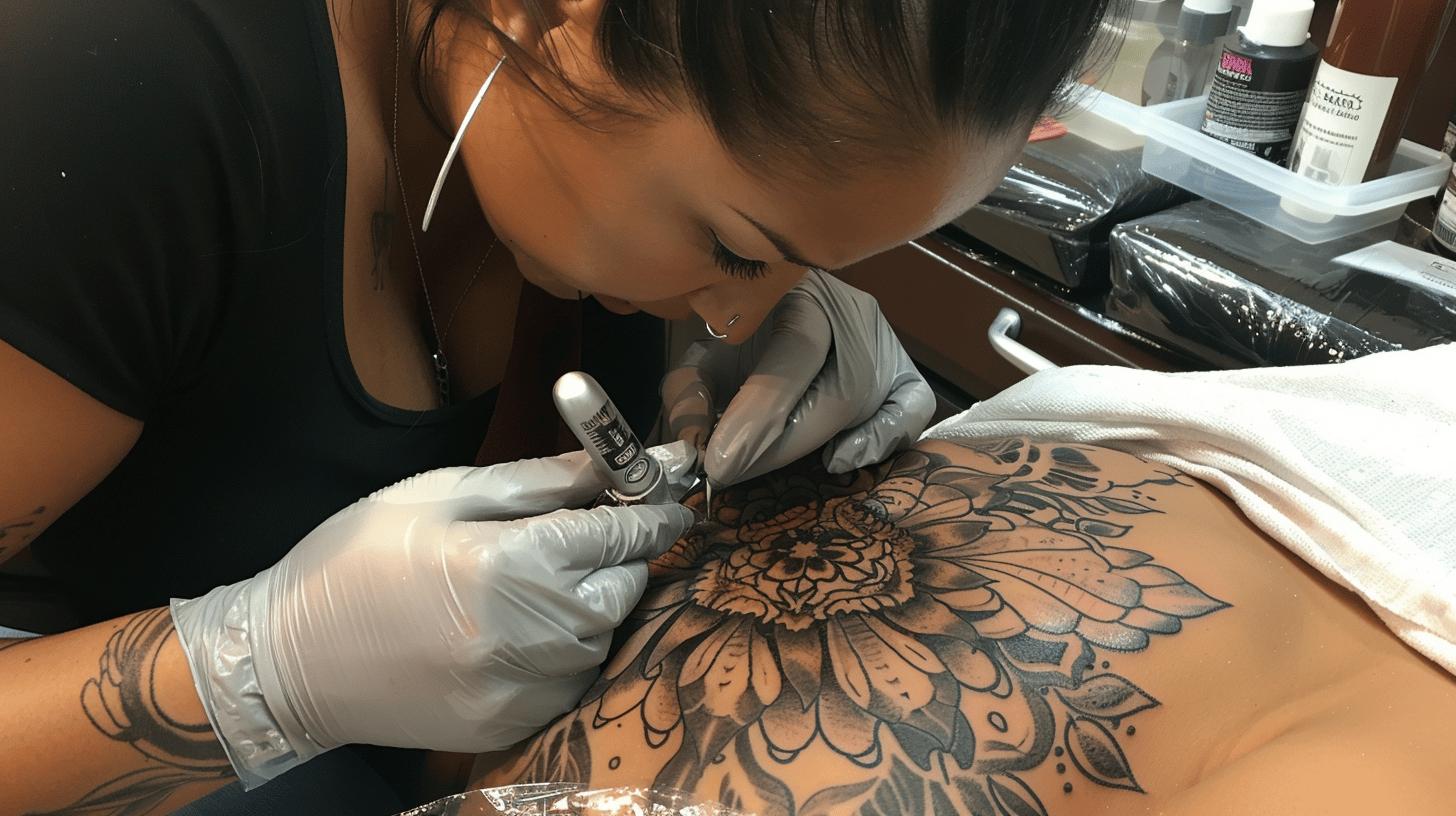
What are the alternatives to numbing cream for tattoos?
Mental preparation, breathing techniques, numbing sprays, choosing less sensitive areas, shorter sessions, and over-the-counter pain relievers like paracetamol are common alternatives.
If you decide not to use numbing cream for tattoos, there are still ways to make the tattooing process easier to manage. Tattoo pain relief without numbing cream starts with simple strategies that minimise discomfort and help you get through your tattoo session.
Here are effective alternatives to numbing cream for tattoos:
- Mental preparation
Preparing mentally for the pain of getting a tattoo can make a big difference. Accepting that some discomfort is part of the tattoo experience can build resilience. - Breathing techniques
Controlled breathing during the tattooing process helps manage pain signals. Slow, deep breaths can keep you calm and distract from pain receptors firing. - Numbing sprays
Some numbing sprays contain topical lidocaine and can be applied during a tattoo appointment if the skin starts to get too sensitive. They offer a temporary numbing effect without needing a thick layer like creams. - Choosing less sensitive areas
Areas with more flesh, like the outer arm or thigh, tend to be less painful compared to ribs, feet, or hands. This makes the tattoo experience more bearable. - Shorter tattoo sessions
Breaking a longer tattoo into multiple shorter sessions can reduce the pain associated with sitting for hours at a time. - Over-the-counter pain relievers
Taking paracetamol before your tattoo appointment can reduce pain slightly. Avoid anti-inflammatory drugs like ibuprofen, as they can thin the blood and hinder the healing process.
Here’s a quick breakdown:Alternative How It Helps Mental preparation Boosts pain tolerance and mental resilience Breathing techniques Controls anxiety and pain perception Numbing sprays Provides temporary relief during tattooing Choosing less sensitive areas Reduces intensity of pain Shorter sessions Limits overall discomfort per session Paracetamol Manages mild pain without affecting healing Using these alternatives can make getting tattooed without numbing cream a lot more manageable, especially if you’re concerned about the potential side effects of topical anesthetic products or if numbing creams work differently on your skin type. Always discuss your options with your tattoo artist’s experience in mind to find the best approach for your next tattoo.
Does Numbing Cream Work Better for Some Tattoo Locations?
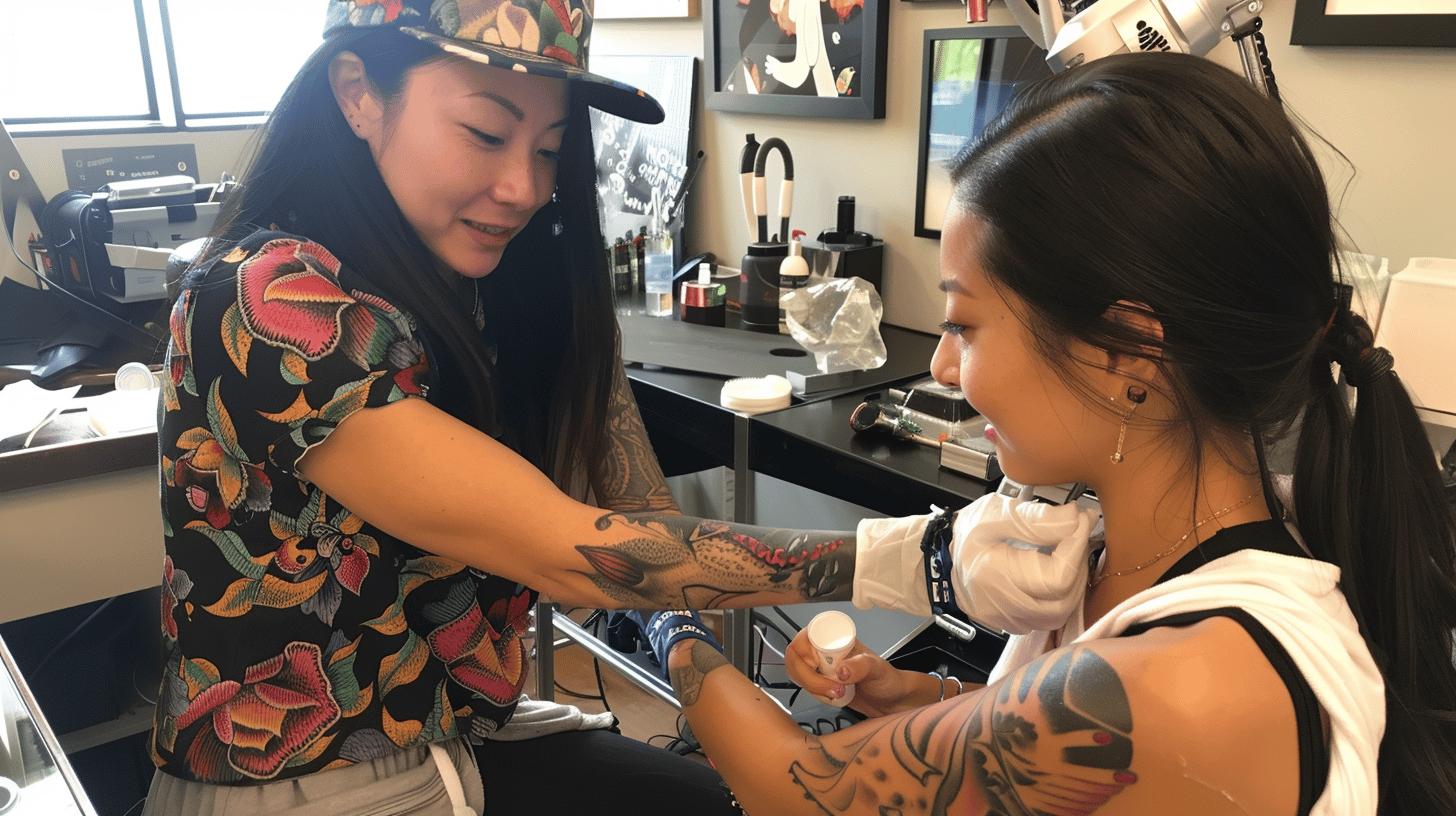
Does numbing cream work better for some tattoo locations?
Yes, tattoo numbing cream tends to work better on fleshier parts of the body and can be less effective on bony areas.
Tattoo numbing creams are applied directly to the skin to block or dull pain signals, making the tattooing process less painful. Areas like the thighs, upper arms, and inner bicep usually see a stronger numbing effect because the dermis is thicker and the nerves are not as close to the surface. In contrast, bony areas like the ribs, hands, feet, and spine can be more difficult to numb fully.
How effective is numbing cream for spine tattoos?
Numbing cream for spine tattoos can reduce the pain of getting inked along the vertebrae, but the numbing effect might fade quicker. The spine is a sensitive area where the skin is thin and nerves are close to the bone, so even a good topical numbing agent like emla cream or tktx might not eliminate pain completely.
What about numbing cream for foot tattoos and hand tattoos?
Numbing cream for foot tattoos and numbing cream for hand tattoos can help make the initial tattoo experience more bearable. However, because the skin is thinner and constantly moving in these areas, the numbness may wear off faster during longer tattoo sessions.
Is numbing cream for rib tattoos and neck tattoos reliable?
Numbing cream for rib tattoos often struggles to provide complete relief because the ribs are very bony and sensitive. The same goes for numbing cream for neck tattoos, although the neck can respond a bit better if the cream is applied thickly and left enough time to absorb into the skin before the tattoo appointment.
Here’s a quick guide to how numbing creams work across different body areas:
| Body Area | Numbing Cream Effectiveness |
|---|---|
| Thighs / Upper Arms / Inner Bicep | Very effective |
| Spine | Moderately effective |
| Feet | Less effective |
| Hands | Less effective |
| Ribs | Least effective |
| Neck | Moderately effective |
Using tattoo numbing cream can still make getting a tattoo more manageable, even in tricky areas. To get the most effective numbing, always apply a thick layer about 30-60 mins before your tattoo appointment and cover it with plastic wrap to help the ingredients absorb into the skin properly. Talking to your tattoo artist’s experience with topical numbing creams can also help set realistic expectations for your new tattoo.
Common Side Effects and Risks of Tattoo Numbing Creams
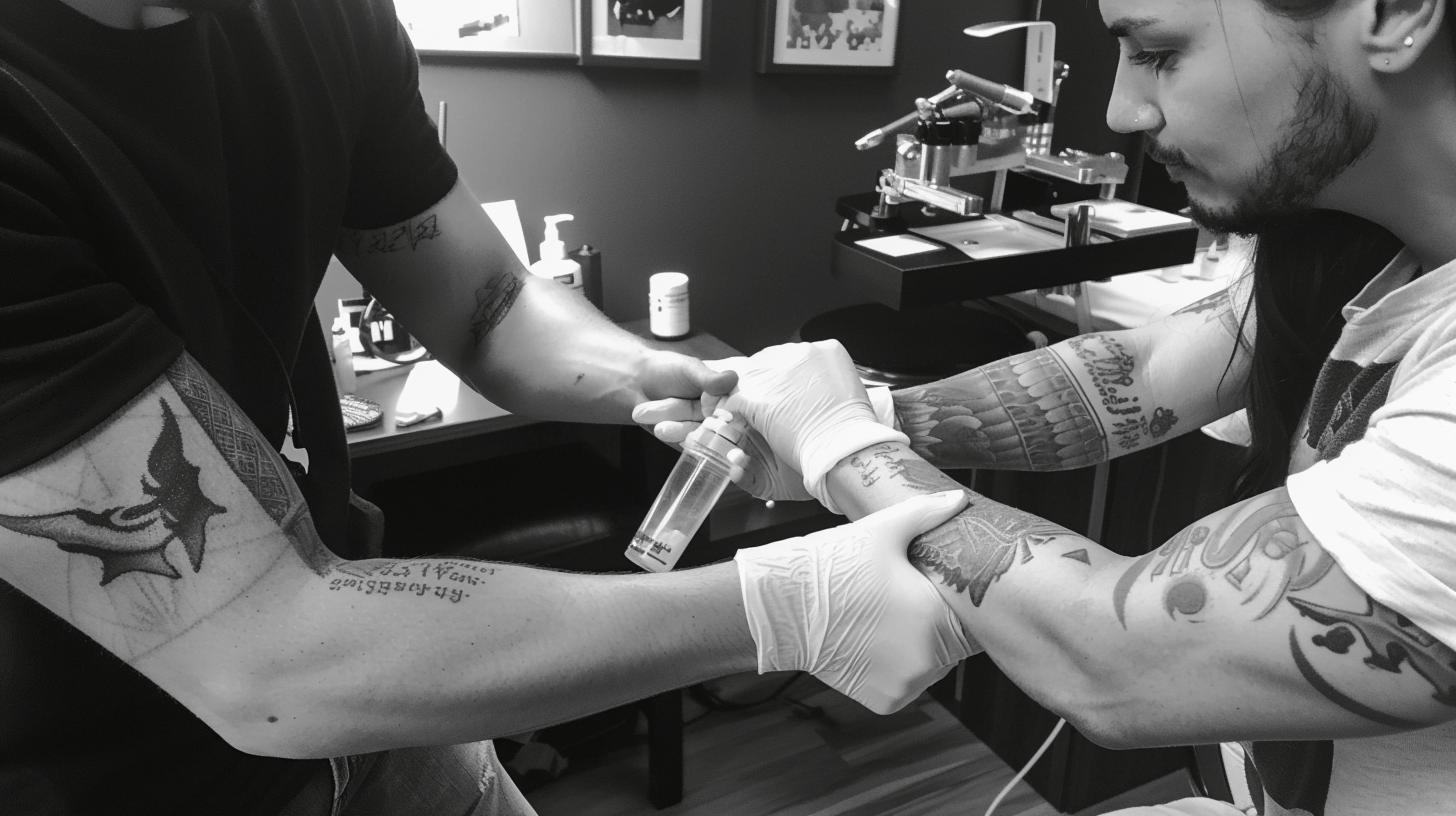
What are the most common numbing cream side effects?
The most common side effects of using tattoo numbing cream are skin irritation, redness, mild swelling, and allergic reactions.
Tattoo numbing creams are topical anaesthetics applied directly to the skin before getting a tattoo to reduce pain signals reaching the brain. While they can make the tattooing process less painful, they are not completely risk-free. Even when using trusted products like emla or tktx, users can experience minor reactions where the cream is applied.
Skin irritation often appears as mild redness or a rash after the cream is removed. Some people may notice swelling around the area of their body where the numbing agent was applied, especially if they have sensitive skin or used numbing cream incorrectly. Allergic reactions, while rare, can include hives, itching, or even breathing difficulties if the ingredients like lidocaine or benzocaine trigger a response.
Are there serious risks linked to using tattoo numbing cream?
Serious risks are rare but can include methemoglobinemia, a blood disorder that reduces oxygen delivery in the body. This has mostly been linked to benzocaine-based products used in excessive amounts. Overuse or applying a thick layer without following instructions can also cause changes in heart rate, dizziness, or trouble breathing — particularly during longer tattoo sessions.
To stay safe when using tattoo numbing cream:
- Always follow the product instructions carefully.
- Do not reapply the cream during a tattoo appointment without your tattoo artist’s approval.
- Speak to a dermatologist before your first tattoo if you have sensitive skin or existing allergies.
- Choose products available to buy from reliable sources that contain no more than the legal 5 percent lidocaine unless you have a prescription from your local pharmacy.
Here’s a quick overview of potential side effects:Reaction Severity Notes Skin irritation Minor Redness, rash, or itching at the application site Swelling Minor Temporary puffiness where the cream was applied Allergic reactions Moderate to serious Hives, itching, difficulty breathing (rare) Methemoglobinemia Serious Linked to benzocaine overuse, affects blood oxygen Heart or breathing problems Serious Rare, usually from excessive application Using tattoo numbing cream sensibly can make getting a tattoo far more bearable, but it’s important to recognise that even the best numbing creams for tattoos carry potential side effects. Always leave yourself enough time to apply the cream properly, activate the cream under plastic wrap, and communicate openly during your tattoo experience to keep the healing process on track.
Why Numbing Cream May Not Work for Everyone
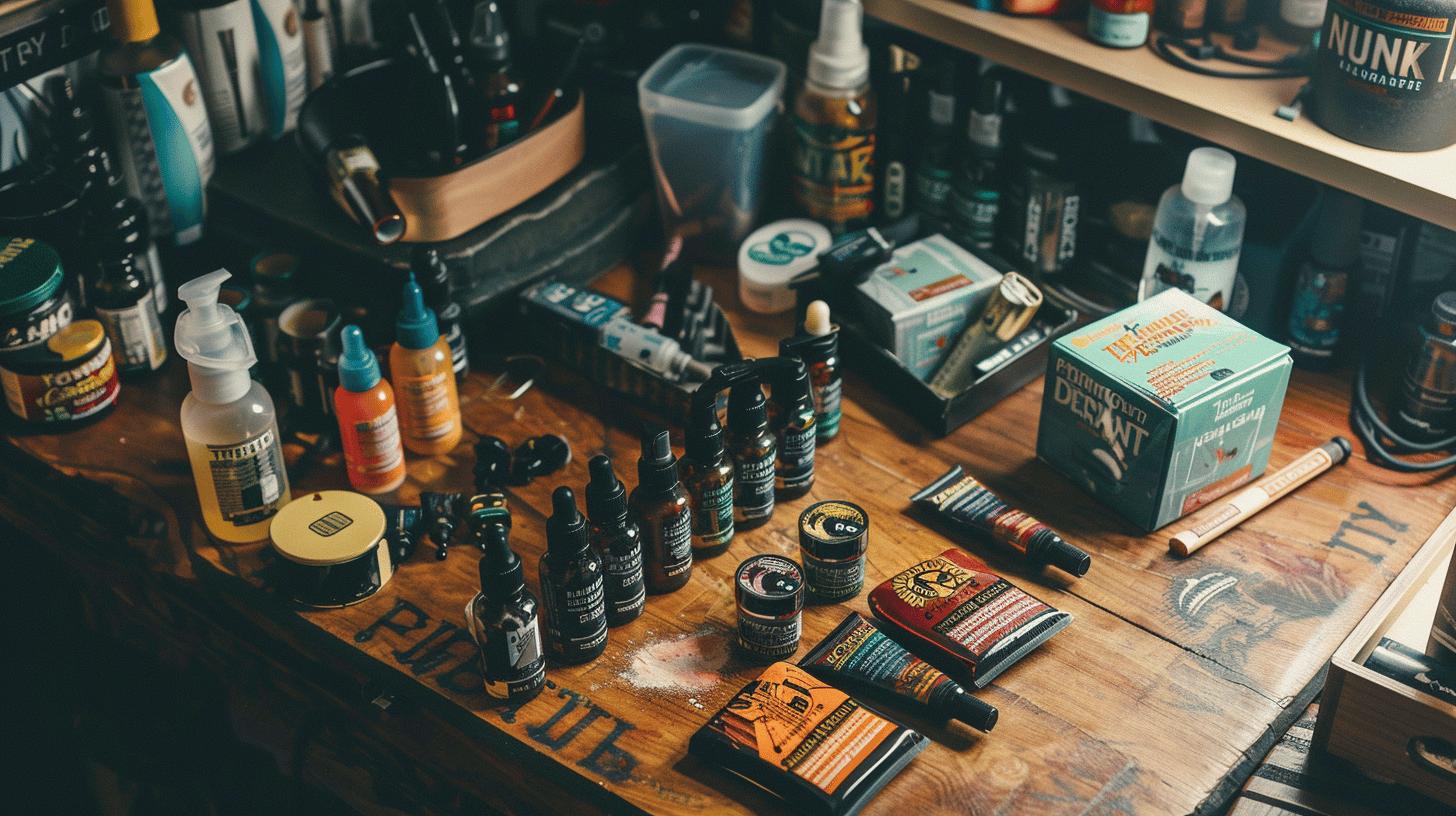
Why numbing cream may not work for everyone?
Numbing cream may not work properly if it is not applied correctly, if the skin is too thick, if individual metabolism breaks down the numbing agent quickly, or during longer tattoo sessions where the numbing effect wears off.
Tattoo numbing creams are designed to reduce pain by blocking pain signals from reaching the brain. Ingredients like lidocaine or benzocaine are applied directly to the skin before the tattooing process begins. When used correctly, numbing cream for tattoos can make the tattoo experience much more bearable. But the reality is, the effectiveness of topical numbing isn’t guaranteed for every person or every tattoo.
Some of the main reasons why numbing creams work differently across clients include:
- Improper application: If you don’t apply a thick layer or leave yourself enough time to apply the cream (typically 30-60 mins pre-tattoo), the numbing agent won’t absorb into the dermis properly.
- Skin thickness: Areas with thicker skin can make it harder for the topical lidocaine to reach the nerves, reducing the intended numbness.
- Individual metabolism: Some people’s bodies naturally break down local anesthetic ingredients faster, meaning the numbing effect fades quicker than expected.
- Length of tattoo session: In longer tattoo appointments, the numbing cream applied at the start can start to wear off midway, making the second half of the tattooing process more painful.
What are common myths about tattoo numbing creams?
One myth is that using tattoo numbing cream will eliminate pain entirely. In truth, even the best creams like tktx or emla numbing cream can only reduce the pain, not remove it completely. Another myth claims that one application lasts all day, but the reality is that numbing typically lasts 1–3 hours, depending on the ingredients and how well you activate the cream under a wrap.
Here’s a quick breakdown of why feelings during numbed tattoo sessions can vary:
| Factor | Impact on Numbing Effect |
|---|---|
| Improper Application | Weak or patchy numbness |
| Thick Skin | Reduced absorption of numbing agent |
| Fast Metabolism | Shorter duration of numbness |
| Long Tattoo Sessions | Numbing effect fades midway |
Using tattoo numbing cream properly before getting a new tattoo can greatly reduce the pain of getting inked, but it’s worth setting realistic expectations. Always ask your tattoo artist’s advice if you plan to use numbing cream, and follow instructions carefully to get the most effective numbing possible.
Comparing TKTX, EMLA, and Dr. Numb: Which Tattoo Numbing Cream Works Best?
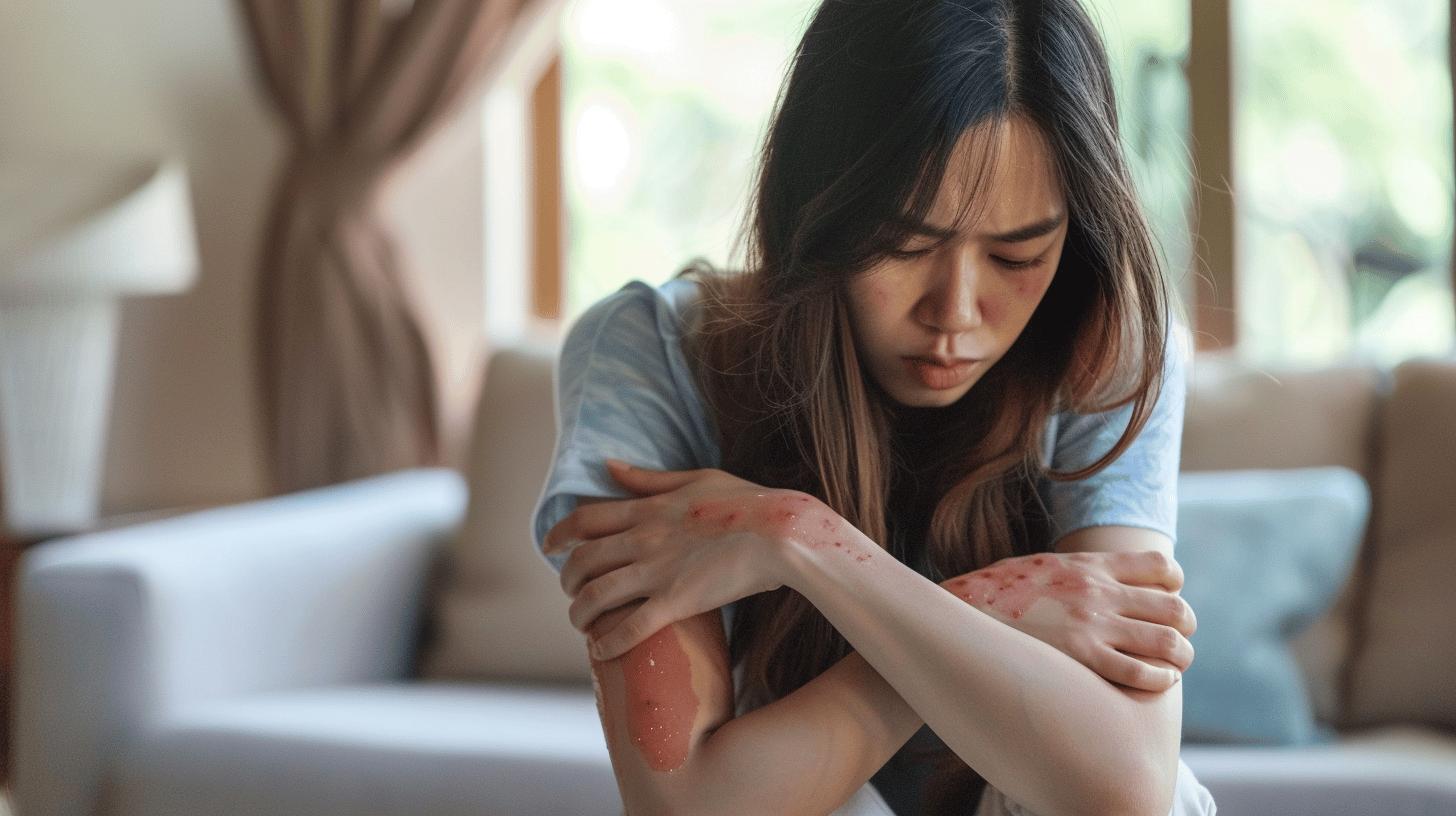
Which tattoo numbing cream works best: TKTX, EMLA, or Dr. Numb?
Dr. Numb tattoo cream is often considered the most effective for strong, consistent numbing, thanks to its maximum 5 percent lidocaine formula.
When comparing numbing creams work for tattoos, each product offers different benefits depending on the tattoo session, skin type, and how long you need the numbing effect to last.
How does TKTX numbing cream perform?
TKTX numbing cream is popular in the tattoo community for offering various strengths and colours, each designed for different types of tattoos. The strongest TKTX cream contains up to 5 percent lidocaine, giving it a powerful numbing effect suitable for longer tattoo sessions. TKTX works best when you apply a thick layer 30-60 mins before your tattoo appointment and cover it properly to absorb into the skin.
Many artists recommend using tattoo numbing cream like TKTX for large tattoos or areas of your body where the skin is thinner, as it helps reduce the pain of getting tattooed significantly.
How reliable is EMLA numbing cream for tattoos?
EMLA numbing cream has a well-known medical reputation and is easily available to buy at Boots, Superdrug, or Amazon. EMLA cream contains 2.5 percent lidocaine and 2.5 percent prilocaine, offering a balanced numbing agent combination.
The best EMLA cream for tattoos is ideal for smaller tattoos or for those getting a first tattoo because it provides effective numbing without making the skin too difficult to tattoo. Unlike stronger options, EMLA numbing cream may start to wear off faster during a longer tattoo session, but it delivers reliable results when you leave yourself enough time to apply the cream properly.
What makes Dr. Numb tattoo cream stand out?
Dr. Numb tattoo cream is a strong choice for anyone wanting maximum numbing for a painful experience. With 5 percent topical lidocaine, it is one of the strongest non-prescription options available. It is especially useful for laser tattoo removal, sensitive areas, or larger tattoos where sitting through the tattooing process would be tough without extra support.
Here’s a quick comparison:
| Product | Strength | Best Use | Notable Features |
|---|---|---|---|
| TKTX | Up to 5% lidocaine | Medium to large tattoos, longer sessions | Multiple formulas and colours |
| EMLA | 2.5% lidocaine + 2.5% prilocaine | First tattoo, small to medium areas | Medical-grade, easily available |
| Dr. Numb | 5% lidocaine | Long sessions, laser tattoo removal | Strong, durable numbing effect |
Choosing the right tattoo numbing cream depends on the tattoo experience you want, the area of your body getting tattooed, and how long you expect the tattoo appointment to last. Always use numbing cream properly to get the most effective numbing and reduce pain signals during the tattooing process.
Real User Experiences: Does Numbing Cream Work for Tattoos?
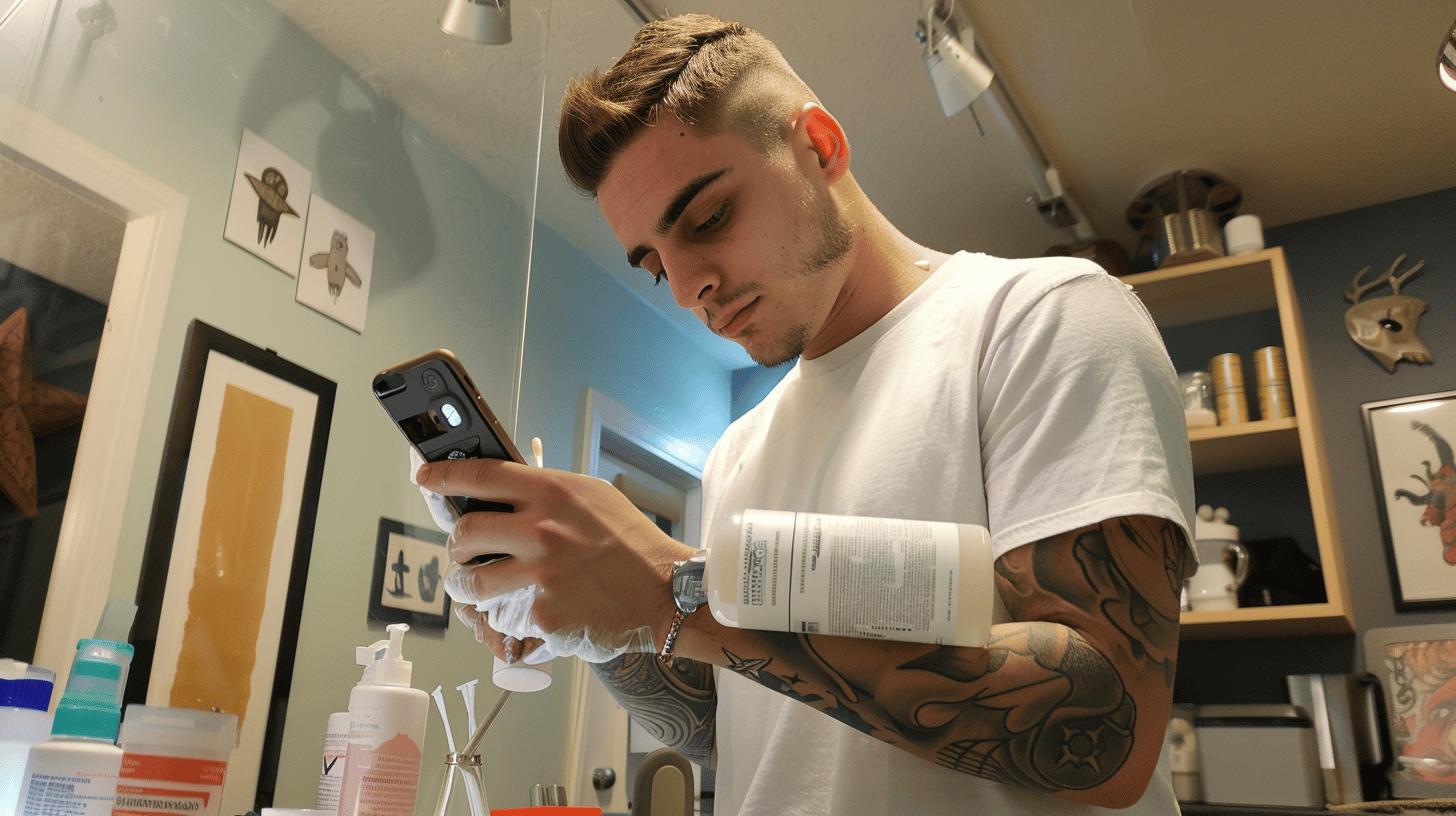
Does numbing cream work for tattoos according to real users?
Yes, numbing cream can reduce the pain of getting a tattoo, but results vary depending on the product, application method, and how long the tattoo session lasts.
Experiences with numbing creams tattoos show that initial numbing is often very effective. Many users report that applying a thick layer of tattoo numbing cream like Dr. Numb or tktx about 30-60 mins before the tattoo appointment leads to a strong numbing effect during the early stages of the tattooing process.
On tattoo numbing cream for tattoos reddit discussions, people often praise the early benefits but mention that numbness starts to wear off during longer tattoo sessions. This is because the topical lidocaine or benzocaine ingredients absorb into the skin but naturally begin to break down, reducing the numbing effect over time.
How long does the numbing effect last according to users?
Most users experience strong relief for about 30–45 minutes after the cream is removed, but this can vary based on the area of your body and the strength of the numbing agent. Areas with more flesh, like the thigh or upper arm, tend to stay numb longer compared to bony spots like ribs and feet.
When reviewing mad rabbit numbing cream reviews, users highlight that while the cream provides a helpful start, it does not eliminate pain completely, especially during longer tattoo sessions. Tattooists also mention that using tattoo numbing cream can sometimes make the skin softer, which might make it slightly more difficult to tattoo as the session progresses.
Here’s a quick overview of common user experiences:
| Aspect | User Experience |
|---|---|
| Early Tattooing Process | Strong numbing effect, less painful |
| Longer Tattoo Sessions | Numbness fades, pain returns |
| Effectiveness by Area | Better on fleshy areas, less on bony areas |
| Skin Changes | Slightly softer, can be difficult to tattoo |
Real-world feedback shows that benefits to using tattoo numbing cream are clear for short sessions or sensitive areas, but the numbing cream may not guarantee a pain-free experience, especially during a longer tattoo.
Is Tattoo Numbing Cream Worth It for Your First Tattoo or Next Tattoo?
Is numbing cream worth it for tattoos?
Yes, using tattoo numbing cream can be worth it, especially for a first tattoo or when getting a new tattoo in a sensitive area.
Tattoo numbing creams are applied directly to the skin before the tattooing process begins. They contain a topical anesthetic like lidocaine or benzocaine, which works by blocking pain signals from reaching the brain. Many first-time clients find that using tattoo numbing cream helps reduce the pain of getting tattooed and eases pre-tattoo anxiety, making the entire tattoo experience more bearable.
When considering if you should use numbing cream for tattoos, think about the area of your body, the size of the tattoo, and your personal pain tolerance. For larger tattoos or placements over ribs, hands, or feet—where pain receptors are closer to the surface—using tattoo numbing cream can reduce pain significantly.
Should you use numbing cream for your next tattoo?
If your next tattoo involves a longer tattoo session or a particularly sensitive spot, numbing creams work well to dull the initial pain. Products like emla cream or tktx are popular choices because they provide effective numbing when you apply a thick layer about 30-60 mins before the tattoo appointment.
Here’s when using tattoo numbing cream is most helpful:
- First tattoo to ease nerves and reduce the pain of getting tattooed.
- Longer tattoo sessions where sitting for hours could become overwhelming.
- Sensitive areas like ribs, feet, hands, or the neck where the tattooing process can be more painful.
Leaving yourself enough time to apply the cream properly and activate the cream under plastic wrap is crucial for achieving the best numbing effect. Always ask your artist’s advice before using topical numbing products to avoid any issues with the ink or the healing process.
Final Words
Exploring whether numbing creams work for tattoos reveals they can help reduce pain but might not guarantee a completely numb experience. How numbing cream works depends on the active ingredients and proper application, and the choice of the best tattoo numbing cream UK has to offer, like TKTX, Emla, or Dr. Numb, makes a real difference.
Getting a tattoo, whether it’s your first tattoo or your next tattoo, often feels more manageable when you use numbing cream properly. While numbing creams work well for many, it’s wise to stay aware of potential side effects to keep the experience as risk-free as possible.
Ultimately, does numbing cream work for tattoos? For most people, the numbing effect really can reduce pain and ease the tattoo journey—helping you enjoy the excitement of a new tattoo without unnecessary stress.
FAQ
Q: Does numbing cream work for tattoos according to real tattoo experiences?
Tattoo numbing cream works for many during the first part of a tattoo session by dulling pain signals, but effectiveness can fade during longer tattoos, depending on skin type and the numbing agent used.
Q: What are the pros and cons of using numbing cream for tattoos?
Using numbing cream before getting a tattoo can reduce pain and anxiety, but improper application or expired lidocaine can cause patchy numbness or risks like skin irritation during the tattooing process.
Q: What is the best numbing cream for tattoos available to buy in the UK?
Popular tattoo numbing creams like Emla cream, TKTX, and Dr. Numb offer strong numbing effects with up to 5% lidocaine, making them trusted choices for reducing the pain of getting a tattoo.
Q: How long does tattoo numbing cream last during a tattoo session?
Most tattoo numbing creams provide a numbing effect for 1 to 3 hours once applied directly to the skin, but this can decrease during longer tattoo appointments without reapplication.
Q: What is the strongest numbing cream for tattoos?
TKTX and Dr. Numb are considered among the strongest tattoo numbing creams, using a high percentage of lidocaine to numb the skin and help make getting tattooed a less painful experience.
Q: How effective is numbing cream for tattoos on sensitive areas like ribs and feet?
Numbing cream for tattoos works better on fleshier areas, but ribs, feet, and hands can be more difficult to tattoo comfortably even after applying the cream, as nerves are closer to the dermis.
Q: Do tattoo artists care if you use numbing cream during a tattoo appointment?
Many tattoo artist’s prefer clients to ask first, as some creams can alter the skin’s texture or make it more difficult to tattoo effectively, especially in a new tattoo session.
Q: How can I make my tattoo less painful besides using numbing cream?
Breathing techniques, mental preparation, choosing less sensitive areas, and short tattooing sessions can reduce pain of getting a tattoo without relying solely on topical numbing products.
Q: Can you still feel a tattoo needle with numbing cream applied directly to the skin?
Using tattoo numbing cream can greatly reduce the pain receptors’ signals, but some pressure, vibration, or scratching sensations from the tattoo needle may still be felt during the tattooing process.
Q: How do I apply a thick layer of numbing cream properly before a tattoo?
To activate the cream fully and numb the skin well, apply a thick layer 45 to 60 minutes before your tattoo appointment, covering it with plastic to help it absorb into the skin.
Q: Are there any potential side effects to using numbing cream for tattoos?
Potential side effects from topical lidocaine products include skin redness, irritation, allergic responses, or in rare cases, methemoglobinemia; always consult a dermatologist if reactions occur.
Q: Is Emla a good numbing cream for tattoos?
Emla numbing cream, containing lidocaine and prilocaine, is widely trusted in the tattoo community for providing a noticeable reduction in pain, especially for smaller tattoos or short tattoo sessions.
Q: Is TKTX good for making longer tattoo sessions more bearable?
The strongest TKTX cream varieties contain high lidocaine concentrations to keep long tattoos more bearable, offering effective numbing for multiple hours if applied correctly and at the right pre-tattoo time.
Q: Where can I get numbing cream for my next tattoo?
Tattoo numbing creams like Emla and TKTX are available to buy online, in pharmacies, or from tattoo supply shops, without requiring a prescription from your local pharmacy.
Q: Why might numbing cream not work well during my tattoo experience?
Numbing creams may not fully eliminate pain if not enough time is allowed to apply and absorb, or if the new ink session is longer, causing numbness to decrease as the tattooing process continues.
Q: Can using numbing cream affect the healing time of my new tattoo?
When used properly and removed before tattooing starts, numbing cream does not generally hinder the natural healing process of your new tattoo, but incorrect use can cause prolonged redness.


